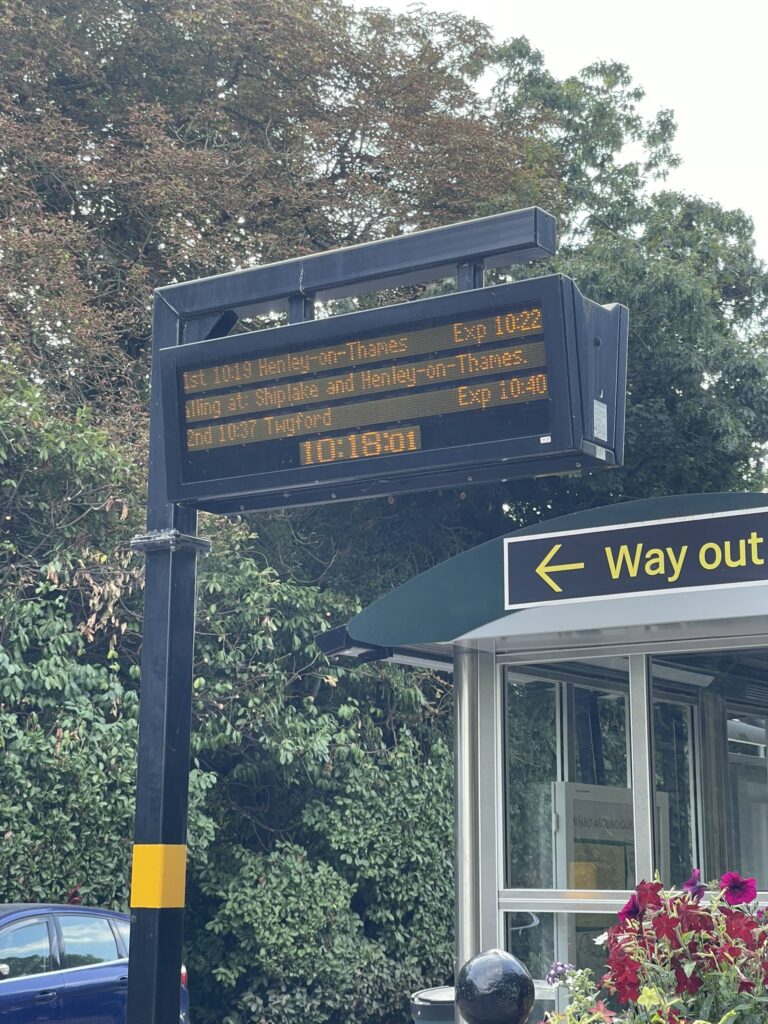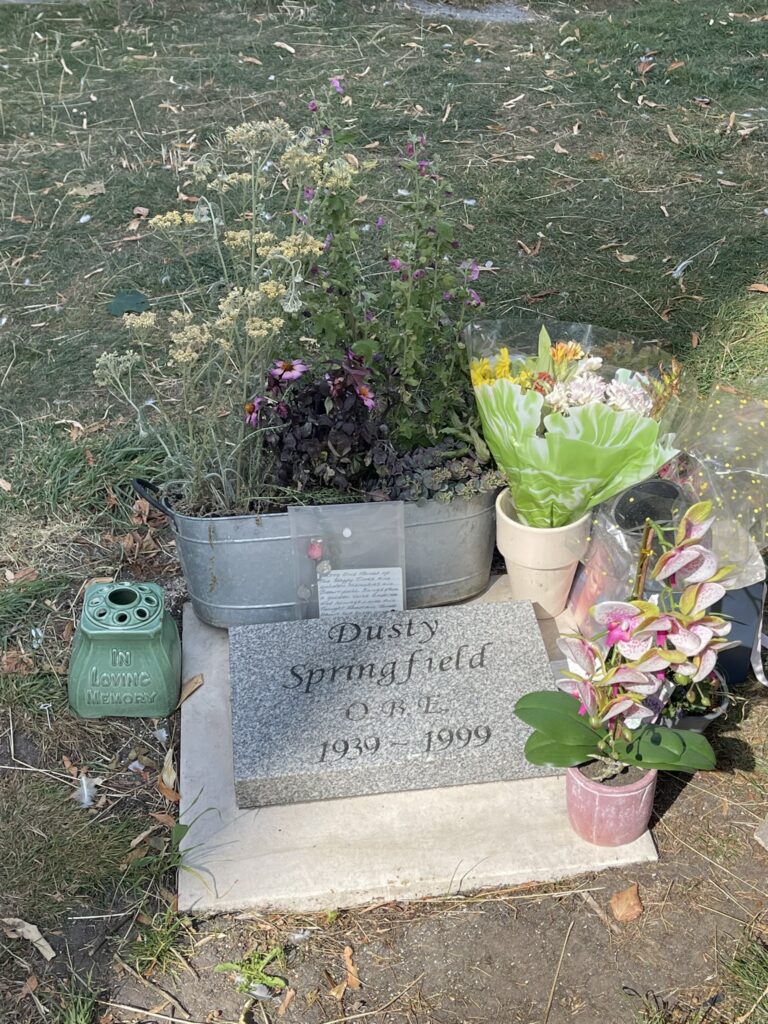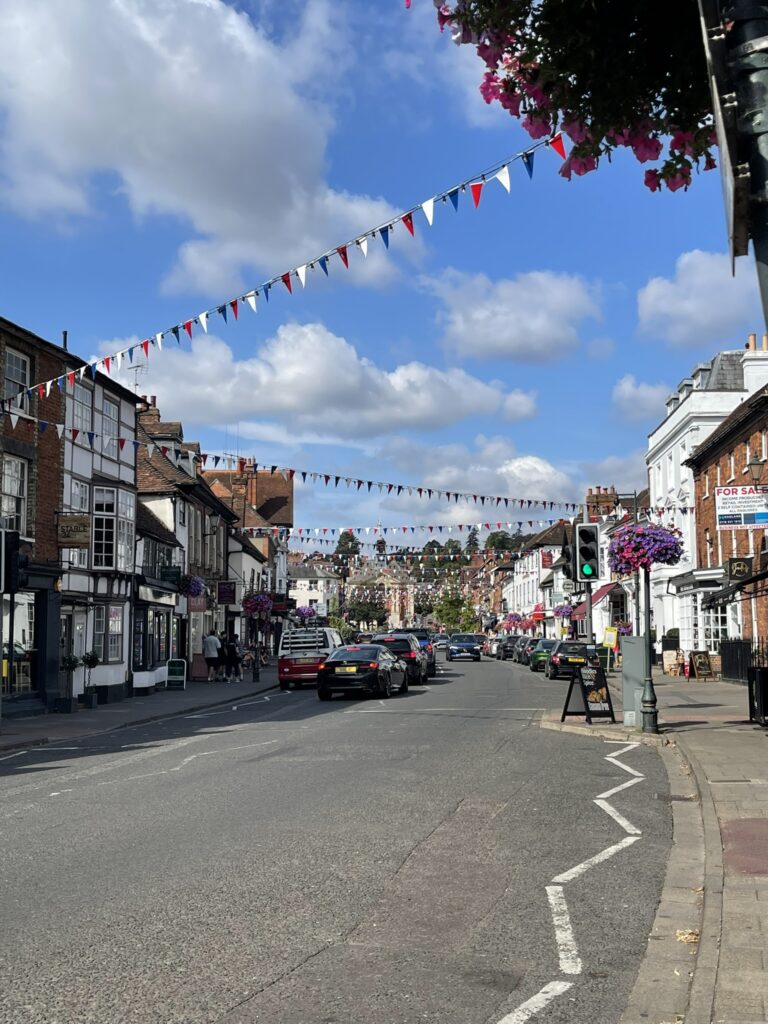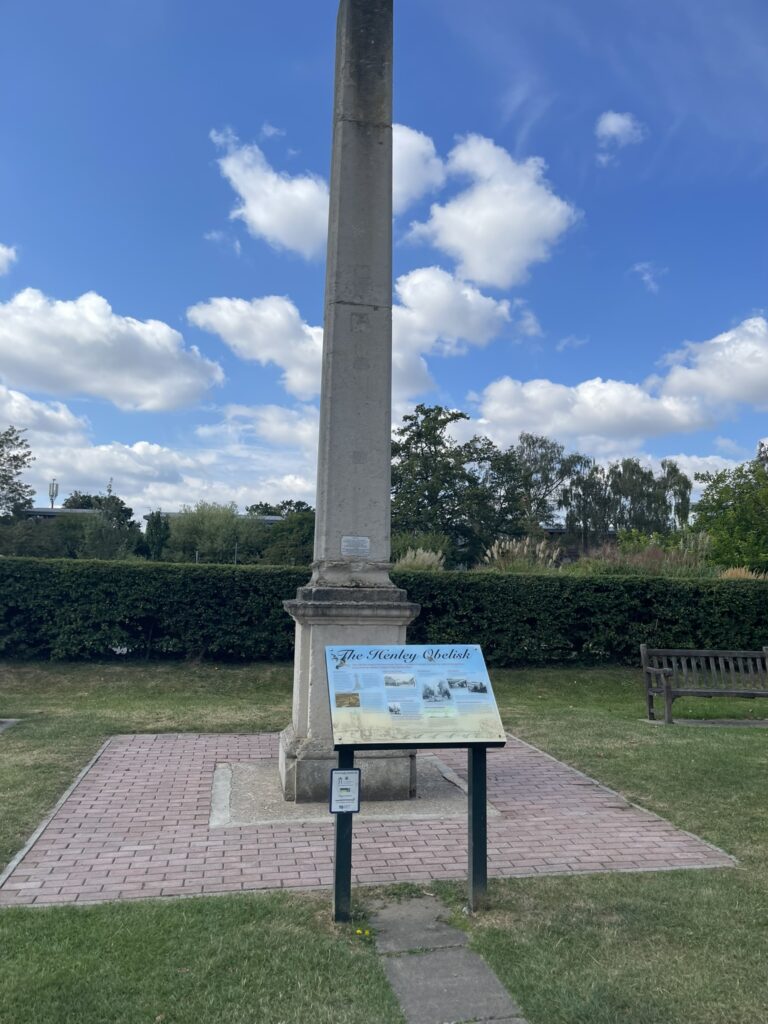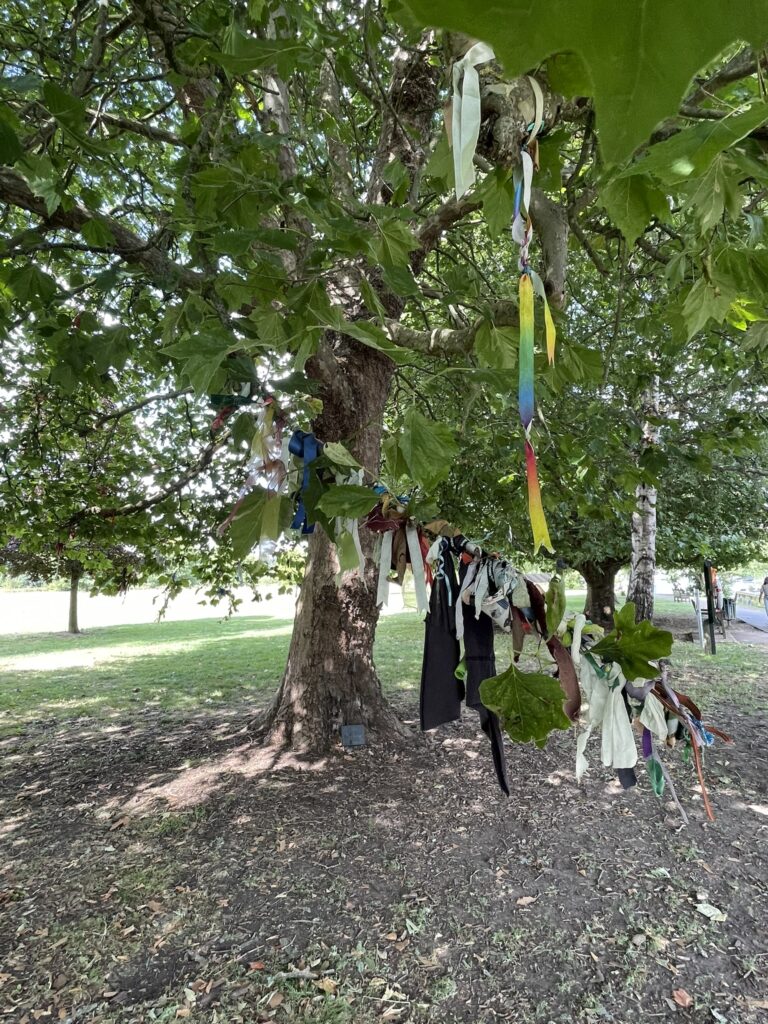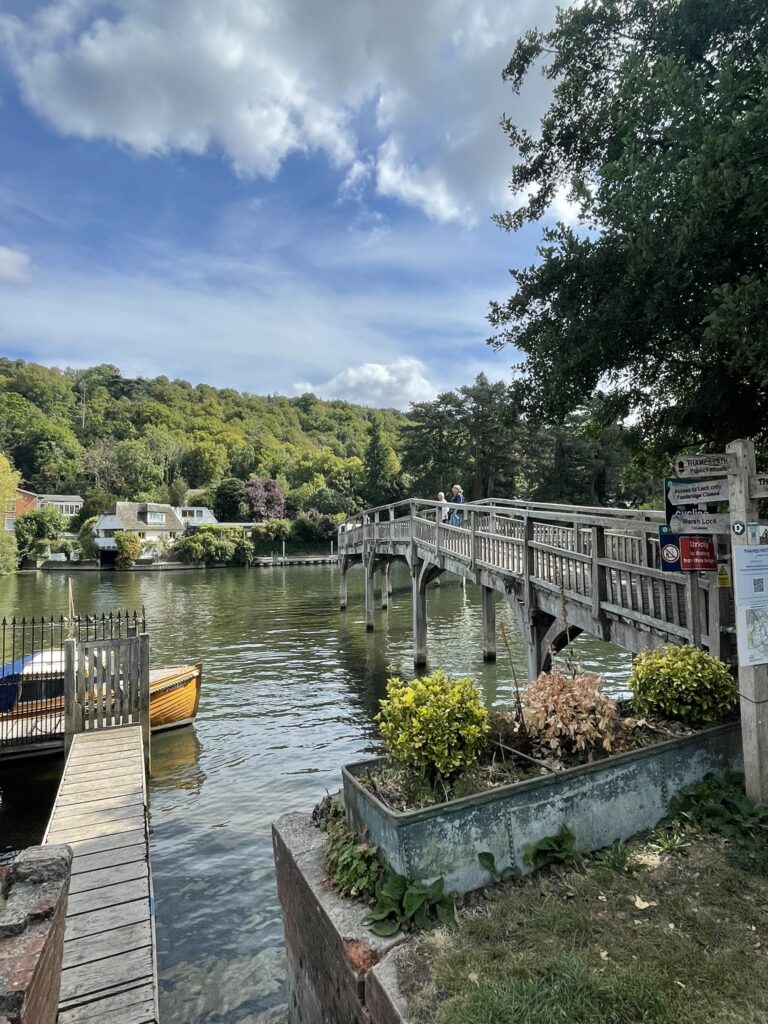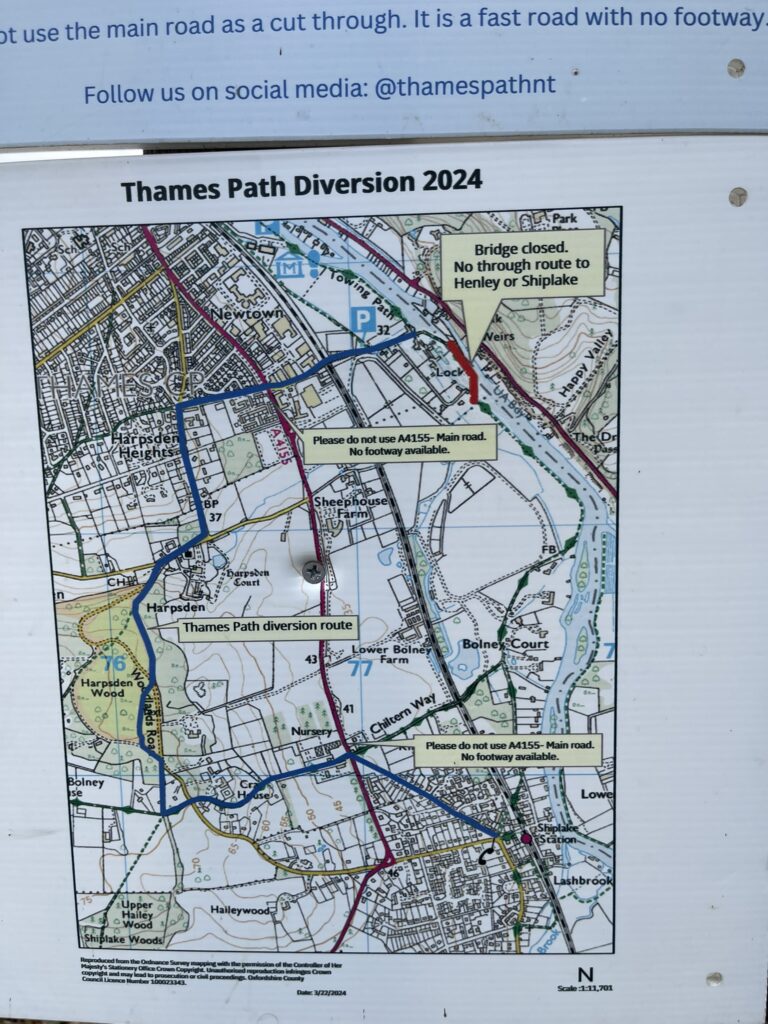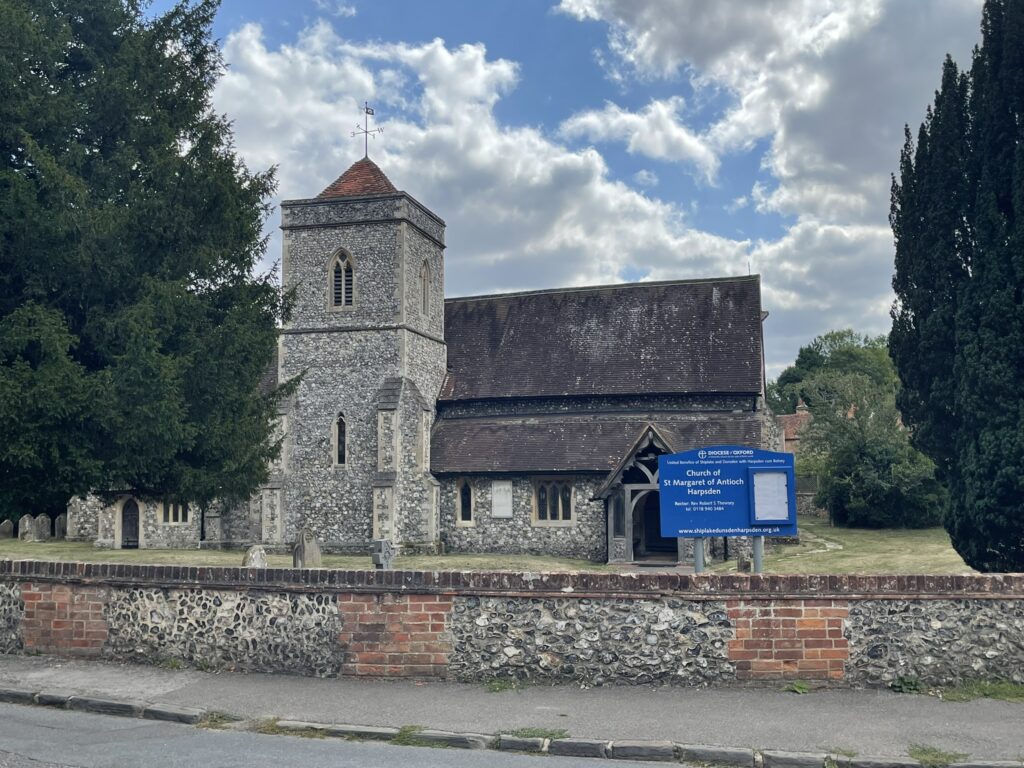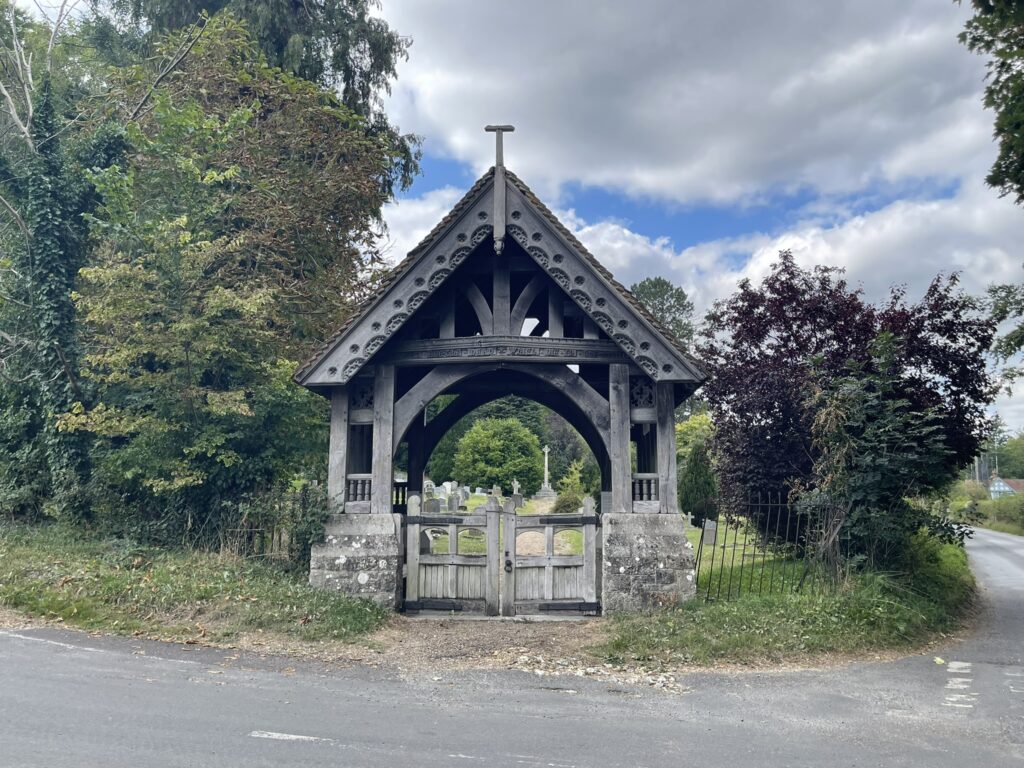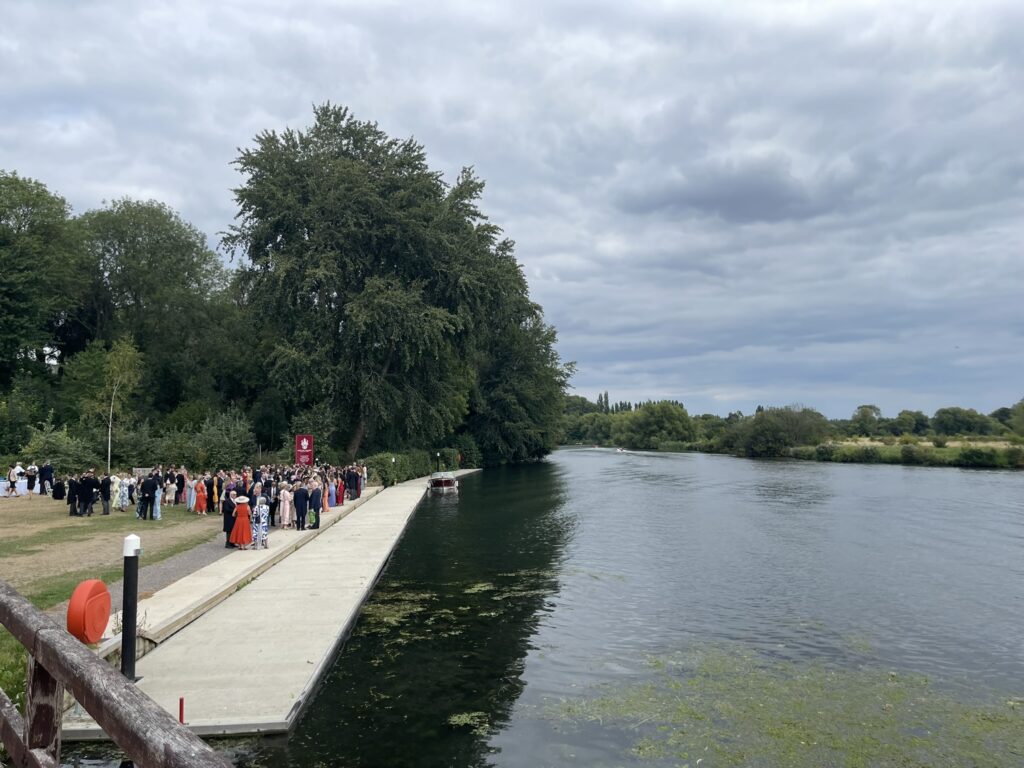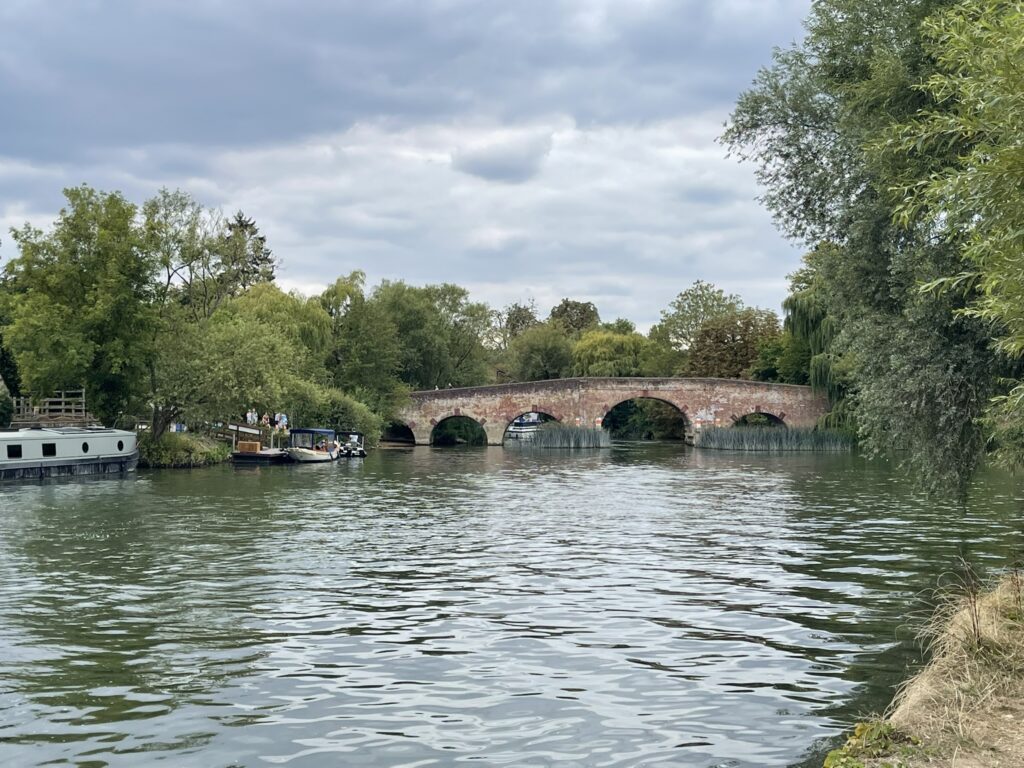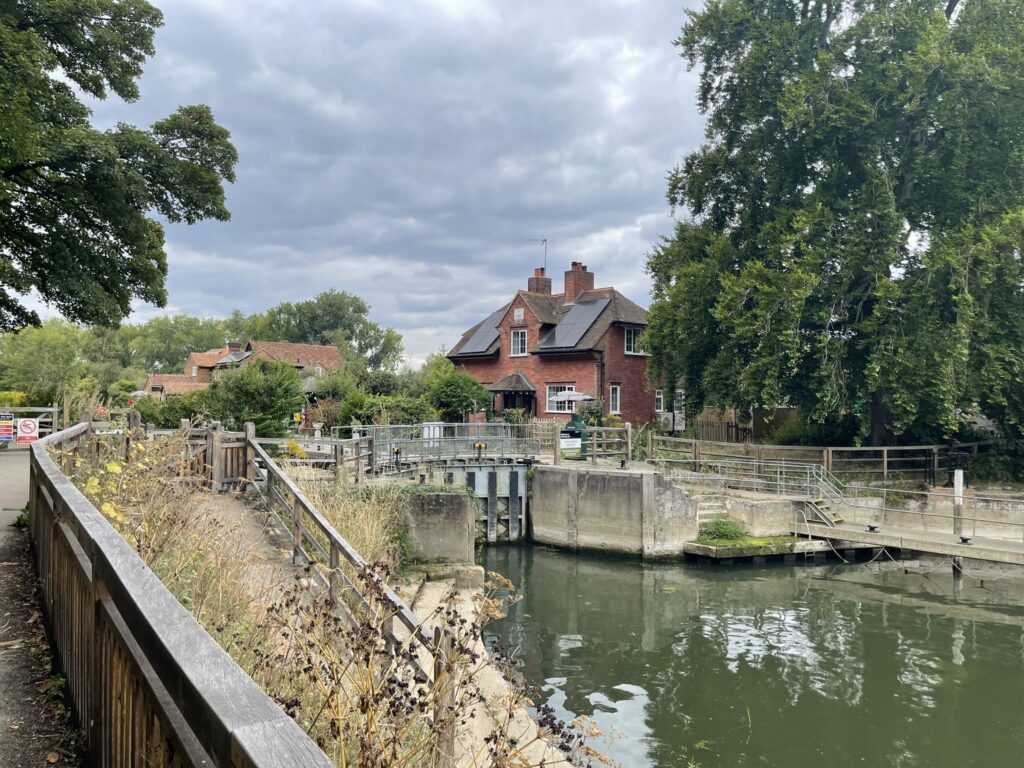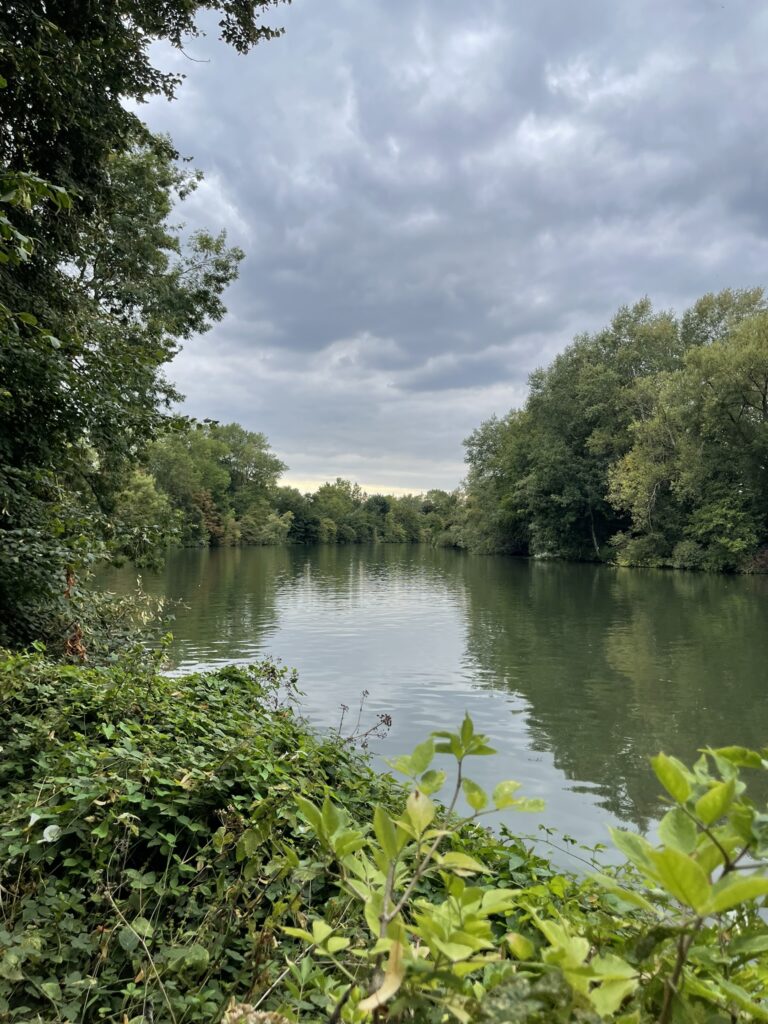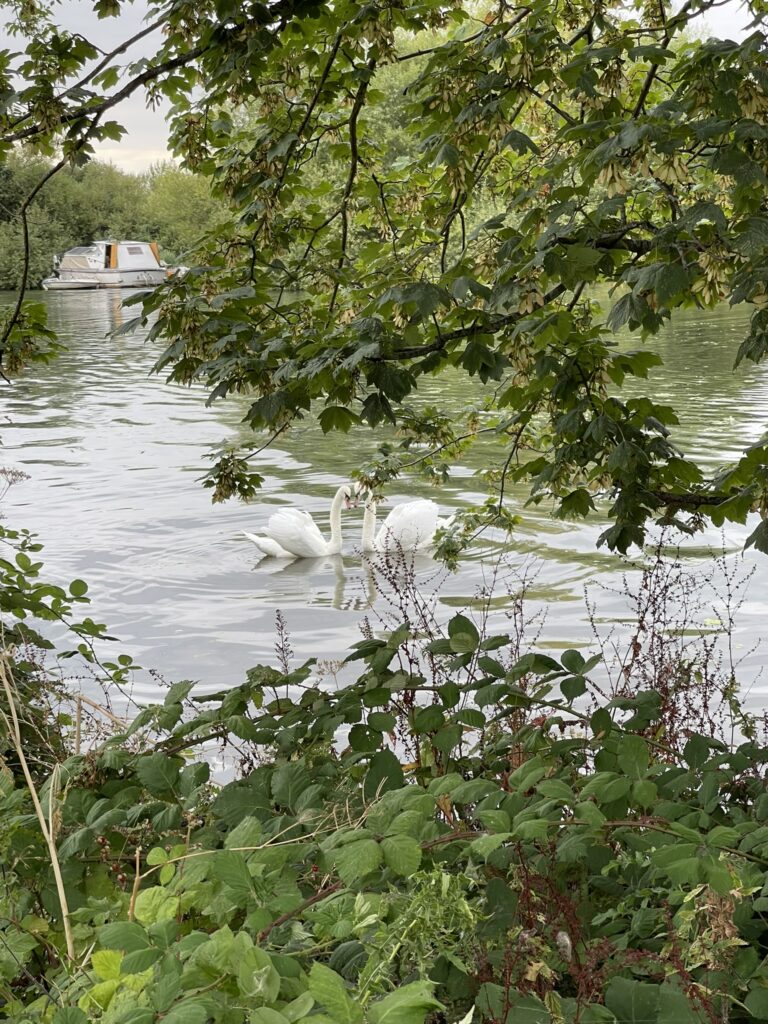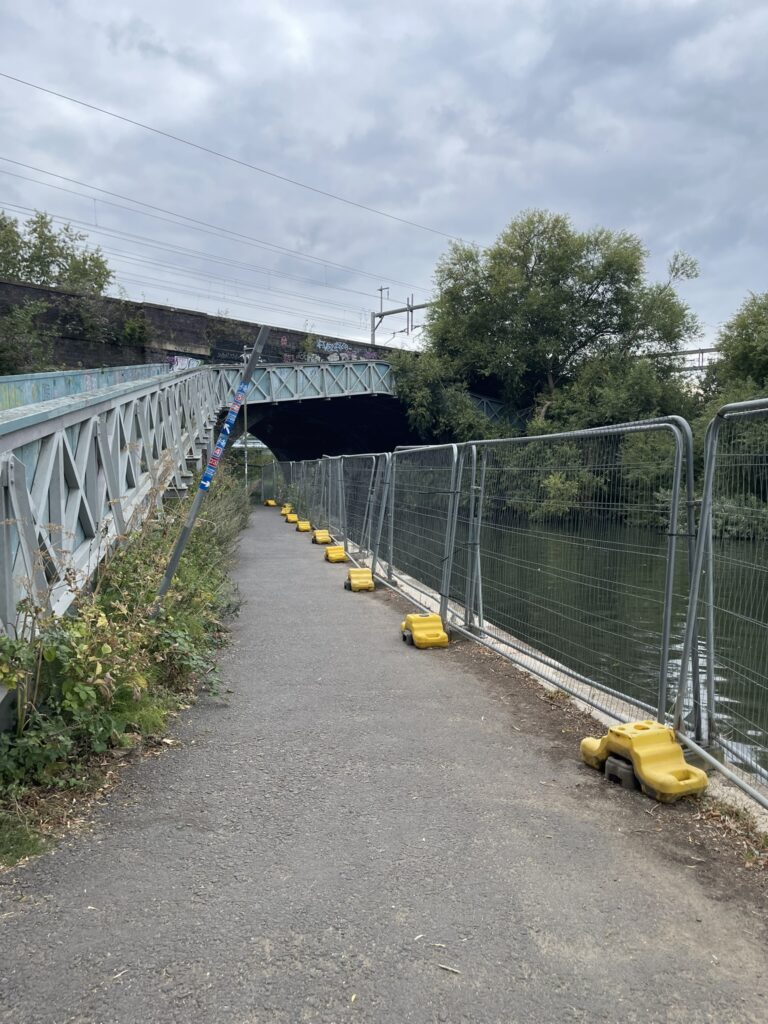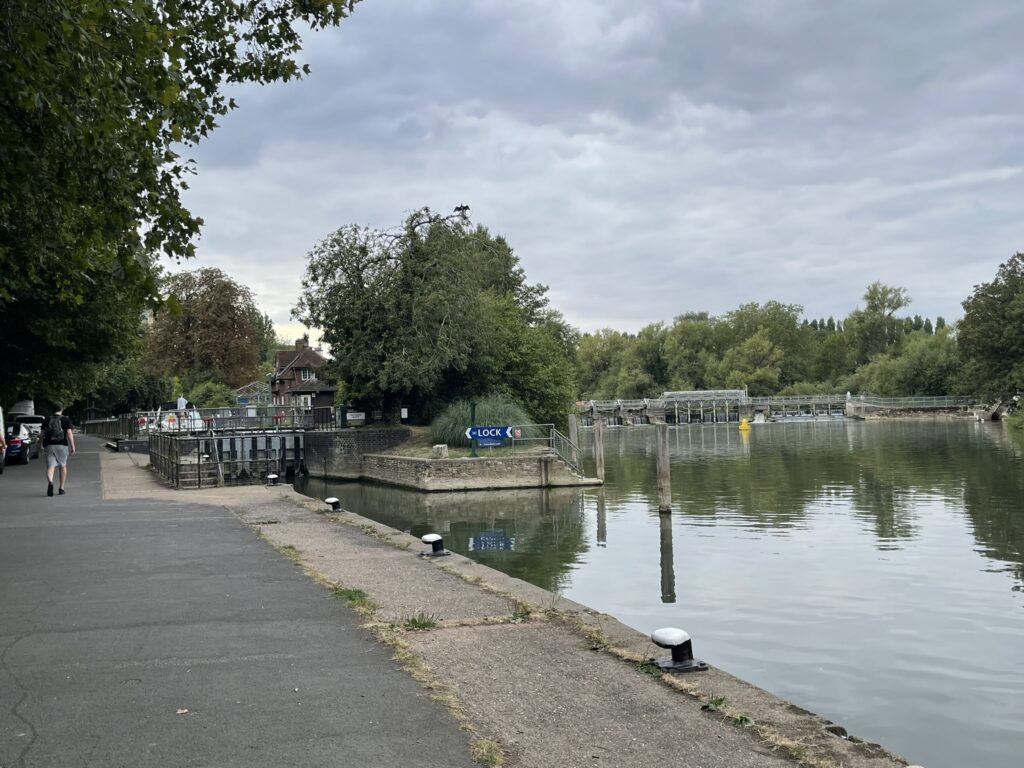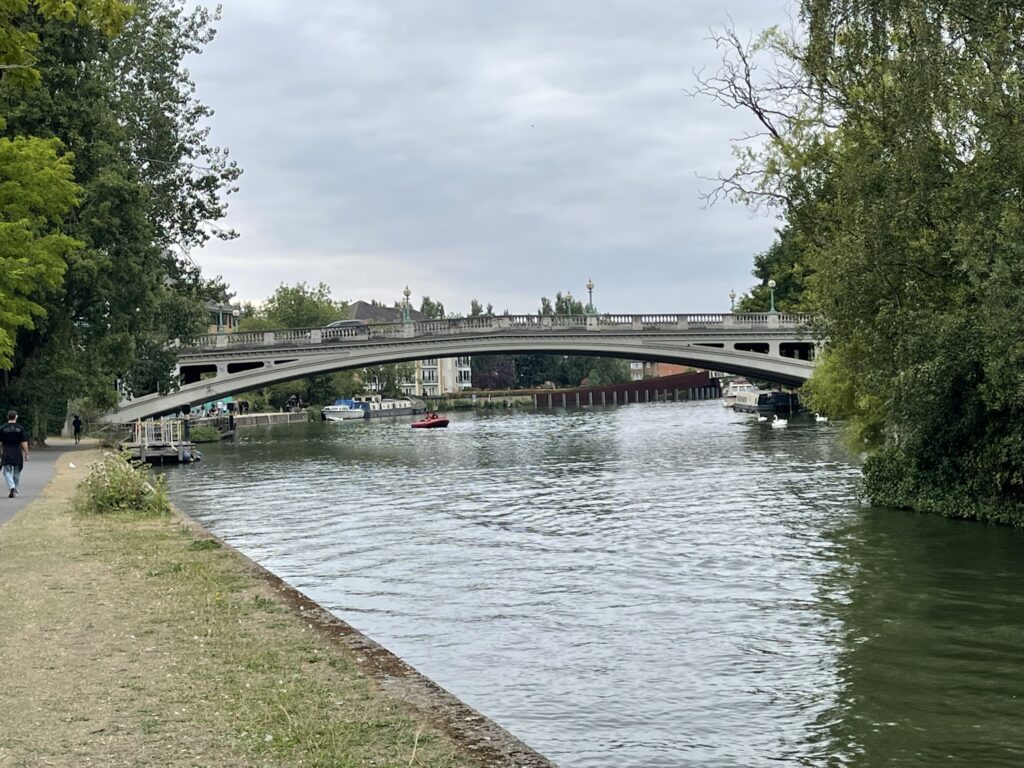Total Distance: 12.1 miles
(map adjusted for diversion)
Time: 6 hours 10 minutes
Points of Interest:
Henley Bridge
St Mary’s Church, Henley
Singers Park
Mill Meadows
Henley Obelisk
River and Rowing Museum
Marsh Meadows
The Wishing Tree
Marsh Lock
St Margaret of Antioch Church
Harpsden Woods
Shiplake Lock
Sonning Bridge
Sonning Lock
Thames Valley Park Nature Reserve
Horseshoe Bridge
Caversham Lock
Reading Bridge
I enjoyed a peaceful night’s sleep at the Bull Inn. My room was spacious and comfortable, equipped with all standard amenities, though the mattress was a little soft for my liking. The staff were very welcoming, and I had a delicious meal of scampi and chips the evening before (my usual go-to pub meal). I always enjoy staying at pubs; the atmosphere is so much more homely and friendly. The following morning, the landlady served a delicious fried breakfast, which was the perfect start to my day. The radio was tuned to Classic FM, and it happened to play Jerusalem, its lyrics brought to mind my walk from the day before, a stroll that indeed showcased England’s green and pleasant land.
After checking out, we strolled through the grounds of St Mary’s Church towards the train station. Wargrave station is on the informally named Regatta Line, also known as the Henley Branch Line. I was amused to see that this short line, consisting of only four stations, was still upholding the tradition of train delays, even if it was only a couple of minutes.
We arrived in Henley after a mere 7-minute journey. Henley, globally recognized for its rowing heritage, offered us some time to explore the town before we set off on our path. Our stroll included a stop at the grounds of the 13th-century St Mary’s Church, where a marker dedicated to Dusty Springfield’s memory rests in the church graveyard. Our walk continued along the High Street, leading us to the Town Hall. Built in 1901 in the Baroque style, this grand building also houses the Visitor Information Centre. From there, we made our way to Henley Bridge, the starting point of our day’s walk.
Henley Bridge, in its current form, opened in 1786, though a crossing has existed at this point on the Thames since ancient times. Constructed from local stone, the bridge is adorned with sculptures of Isis and Tamesis, gracing the keystone of the central arch on each side.
Leaving the bridge behind, we ventured through Singers Park and into Mill Meadows. Here, we discovered the Henley Obelisk, a historic Portland stone monument, standing approximately 15 feet tall. Originally erected in Henleys’ Market Place in 1788 as a symbol of civic pride, it has been moved multiple times due to development. Notably, after being dismantled for a roundabout in 1973, efforts were made to find it a new home before its permanent placement at Mill Meadows.
A little further along is the River and Rowing museum. The museum opened in 1998, and tells stories about the River Thames, its flora and fauna, rowing, and the culture and history of the local area. I didn’t have time to have a look round, but I did pop in to get my next stamp in my Walk the Thames passport. Sadly, the museum is closing on the 21st September, so I may not get a chance to go back.
Walking along the willow lined path, we cross into Marsh Meadows where the wishing tree stands. The sycamore tree was dedicated as a wishing tree in 2017. People are encouraged to tie a ribbon on its branches and make a wish. Unfortunately, I was all out of ribbon today, so I couldn’t make a wish!
As we approached Marsh lock, I was already aware of a diversion that was in place. The footbridge has been deemed unsafe and therefore closed, and so the path has been diverted around Marsh lock until 31st January 2026, however this date may be extended. The diversion unfortunately adds an additional 3 miles onto the route. The diversion is well signposted, but I also took a photo of the diversion map to be on the safe side.
We headed towards the village of Harpsden, passing over the busy A4155 road. The 12th century parish church of St Margaret of Antioch lies in the centre of the village. We had a rest in the churchyard, a little further along the road.
Once rested, we continued along the diversion which went through the ancient Harpsden woods. I got a bit lost in the woods, there are many different paths and I think if I had stuck to the road the route might have been more direct, but we had a rather pleasant walk and we soon got back on track.
The route then led us to Lower Shiplake where the diversion ended. It was time to get another stamp in my Wallk theThames passport, so we popped into the Baskerville Arms. It was only fair that as they took the trouble to stamp my passport that I should purchase a pint and spend a bit of time at their establishment.
Leaving the temptation of another pint behind, we rejoined the Thames Path. It now stretched towards Shiplake, leading us through open fields and under the railway bridge we’d crossed earlier by train. We passed by Shiplake Lock, which was originally built in 1773 and then rebuilt in 1874. This lock was the first lock on the Thames to have hydraulic operation installed in 1961.
The path led us through the grounds of Shiplake College Boathouse, where a wedding party was in full swing. We felt quite out of place as we passed through, and to my disappointment, no one offered a glass of champagne to this weary walker.
We had another rest on the banks before continuing to Sonning. The village is very picturesque and it has been a favourite location for artists. The bridge was opened in 1775 and is now grade II listed. In the 18th century, the bridge presumably gave Dick Turpin a convenient escape route from Berkshire to Oxfordshire when he was staying at his aunt’s inn in Sonning. We sat down again (it’s been a long walk!) at Sonning Lock. The lock was built in 1773 and has been rebuilt three times since then, the latest in 1905.
Is there a spot more lovely than the rest,
By art improved, by nature truly blest?
A noble river at its base running,
It is a little village known as Sonning.– James Sadler (1845–1885), Sonning lock keeper
With Cher in her carrier, we continued along the path passing through the Thames Valley Park Nature Reserve, slightly spoilt by the glass buildings on an industrial estate on the outskirts of Reading.
Crossing the River Kennet, we reached Horseshoe Bridge. The bridge dates back to 1892 and is attached to Brunel’s adjoining brick railway bridge, which itself opened in 1839. Despite its romantic-sounding name, the bridge itself was far from it, covered in graffiti—a clear sign of our approach to urbanisation. The bridge was cleaned and renovated back in 2022, but sadly the vandalism has returned.
Caversham Lock was the final lock of our day. Originally constructed in 1778 and then rebuilt in 1875, the lock saw the addition of a micro-hydroelectric turbine in 2021. This turbine utilises the water head from the weir, generating 46 kilowatts (62 hp) of electricity with its twin Archimedes screw turbines.
Once passed the lock, we arrived at Reading Bridge, our last stop for the day. That three-mile detour made for a pretty long and tiring walk! Wanting to dodge the crowds as the Reading Festival wrapped up, we headed straight for the station, ready to get out of town.




